Repurpose an Old Television as a Plant Stand
Have you ever looked at that old television gathering dust in your attic or basement and thought, "What on earth am I going to do with this?" Well, instead of letting it languish in obscurity, why not transform it into a stunning plant stand? Not only does this creative project breathe new life into a forgotten piece of technology, but it also adds a unique touch to your home decor. Imagine the surprise on your friends' faces when they see your chic, eco-friendly plant display—who would ever think that an old TV could be so stylish?
Repurposing an old television as a plant stand is not just about aesthetics; it's also a sustainable choice that helps reduce waste. By taking something that would typically end up in a landfill and giving it a new purpose, you’re making an environmentally friendly statement. Plus, the possibilities for customization are endless! You can paint it any color, add shelves, or even incorporate lighting to highlight your beautiful plants. So, let’s dive into the world of creativity and explore how to turn that outdated TV into a fabulous focal point in your living space.
Before we get started, it’s essential to consider the right television model for this project. Not all TVs are created equal; some are bulky and heavy, while others are sleek and lightweight. Ideally, you want to choose a television that has a sturdy structure and enough space to accommodate your plants. Whether it's a vintage boxy model or a more modern flat-screen, the right choice will set the foundation for a successful transformation.
Once you've selected your television, the real fun begins! Preparing the TV for its new role involves cleaning, removing internal components, and ensuring it’s safe for both you and your plants. This might sound daunting, but with a little patience and the right tools, you’ll be amazed at how quickly you can turn that old relic into a stylish plant stand. So grab your tools, roll up your sleeves, and let’s make some magic happen!
- Can any old television be used for this project? Yes, but it's best to choose a model that is sturdy and has enough space for your plants.
- How do I ensure the safety of my plants and home? Make sure to remove all internal components and clean the TV thoroughly before use.
- What types of plants work best in a repurposed TV stand? Consider plants that match the light conditions of your home, such as low-light plants for darker areas and bright-light plants for sunnier spots.

Choosing the Right Television
When it comes to transforming an old television into a stunning plant stand, the first step is selecting the right model. Not all televisions are created equal, and the choice you make can significantly impact both the aesthetics and functionality of your new plant display. Start by considering the size of the television; you want something that can accommodate your plants without overwhelming your space. A large, bulky television might dominate a small room, while a smaller unit could look lost in a larger area.
Next, think about the style of the television. Vintage models with wooden frames can add a rustic charm to your home decor, while sleek, modern designs might be better suited for contemporary spaces. The style you choose should complement your existing decor and reflect your personal taste. Additionally, ensure the television has the right structural integrity. You want a model that can support the weight of your plants and any soil or pots you plan to use. A well-built television will not only serve as a sturdy base but also provide a unique visual element to your home.
To help you in your decision-making process, consider the following factors:
- Size: Measure the space where you plan to place the plant stand and ensure the television fits well.
- Style: Choose a model that matches your home decor, whether it's vintage, modern, or somewhere in between.
- Condition: Look for a television that is in good shape; a model with a cracked screen or extensive damage might not be worth the effort.
- Accessibility: Ensure that the television is easy to access for maintenance and plant care once it's set up.
Furthermore, consider the type of materials used in the television's construction. Many older models may have wooden or metal components that can be easily repurposed or painted to fit your design vision. If you’re feeling adventurous, you can even use the screen as a backdrop for trailing plants, creating a stunning visual effect. Remember, the goal is to create a functional plant stand that not only showcases your greenery but also serves as an eye-catching piece of furniture in your home.
In summary, choosing the right television for your plant stand project is all about finding the perfect balance between size, style, and structural integrity. Take your time to explore various options, and don’t hesitate to let your creativity shine through. After all, this project is not just about recycling an old item; it’s about creating something beautiful and unique that enhances your living space.
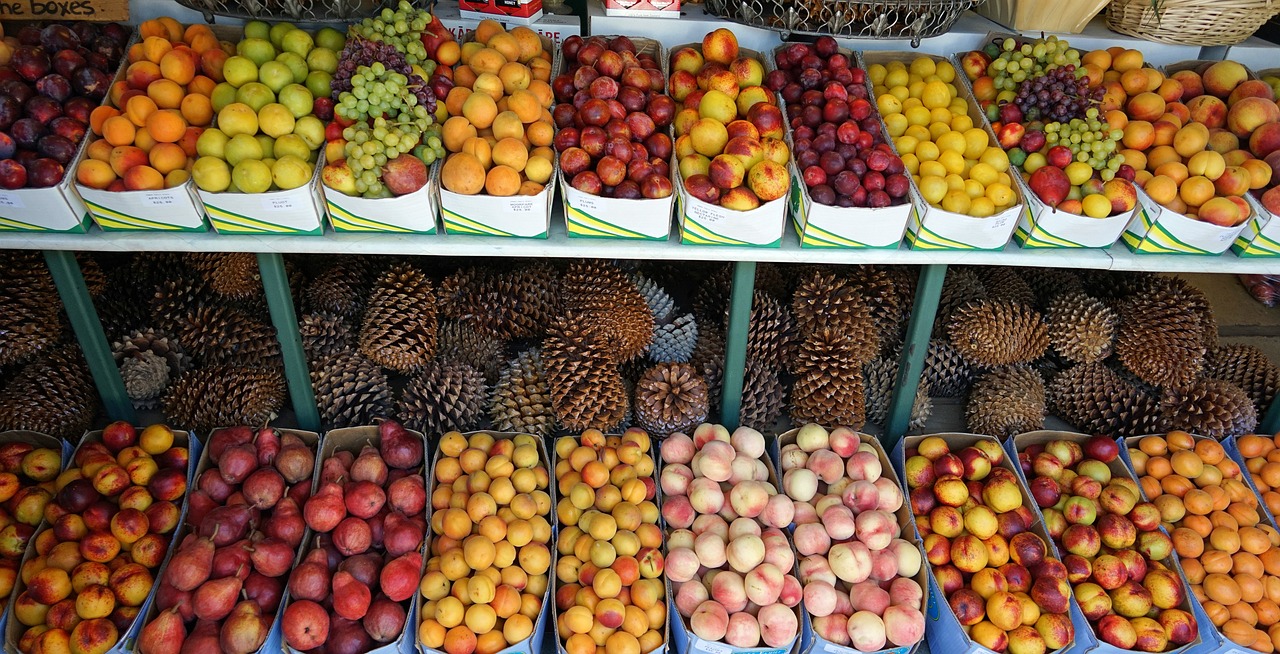
Preparing the Television
Before diving into the exciting world of transforming your old television into a stunning plant stand, it's crucial to prepare the television properly. This preparation phase is not just about aesthetics; it's about ensuring safety and functionality. First, you need to give your old TV a thorough cleaning. Dust and grime can accumulate over the years, and a clean surface will not only look better but also provide a healthier environment for your plants. Use a damp cloth with a mild cleaner to wipe down the exterior, making sure to avoid any electronic components that might still be inside.
Next up is safety. Old televisions, especially tube models, can contain hazardous materials such as lead and high-voltage components. Therefore, taking the necessary safety precautions is paramount. Make sure to unplug the television and let it sit for a while before starting the disassembly process. This ensures that any residual charge in the capacitors has dissipated. Always wear gloves and protective eyewear to shield yourself from any unexpected mishaps.
As you proceed with the cleaning, remember that safety is your best friend. Here are some key precautions to consider:
- Unplug the television and allow it to cool down completely.
- Wear protective gear, including gloves and goggles.
- Work in a well-ventilated area to avoid inhaling dust or fumes.
Once the cleaning is done, it’s time to tackle the internal components. Disassembling the television may seem daunting, but it’s a necessary step to create a safe and spacious plant stand. Most old TVs can be opened by removing screws located at the back. Be sure to keep track of these screws, as you’ll need them later if you decide to reassemble the TV for any reason.
When you open up the television, you'll likely encounter various internal components such as the CRT (cathode ray tube), circuit boards, and wiring. Carefully remove these parts, as they can take up valuable space that your plants need. Not only does this step enhance the aesthetic appeal of your plant stand, but it also reduces the risk of any electrical hazards. Remember to dispose of these components responsibly, as they can be considered electronic waste.
After you’ve cleared out the insides, it’s time to focus on the outer appearance of your television stand. Sealing and painting the exterior can give it a fresh look that complements your home décor. Choose a color that resonates with your personal style or matches the room where the stand will be placed. A coat of weather-resistant paint can also protect the surface from moisture and wear, ensuring your plant stand remains vibrant and functional for years to come.
In summary, preparing your old television for its new role as a plant stand is a multi-step process that emphasizes cleanliness, safety, and creativity. By taking the time to clean, disassemble, and enhance the exterior, you’re setting the stage for a beautiful and functional piece of home decor that not only showcases your plants but also tells a story of transformation and sustainability.
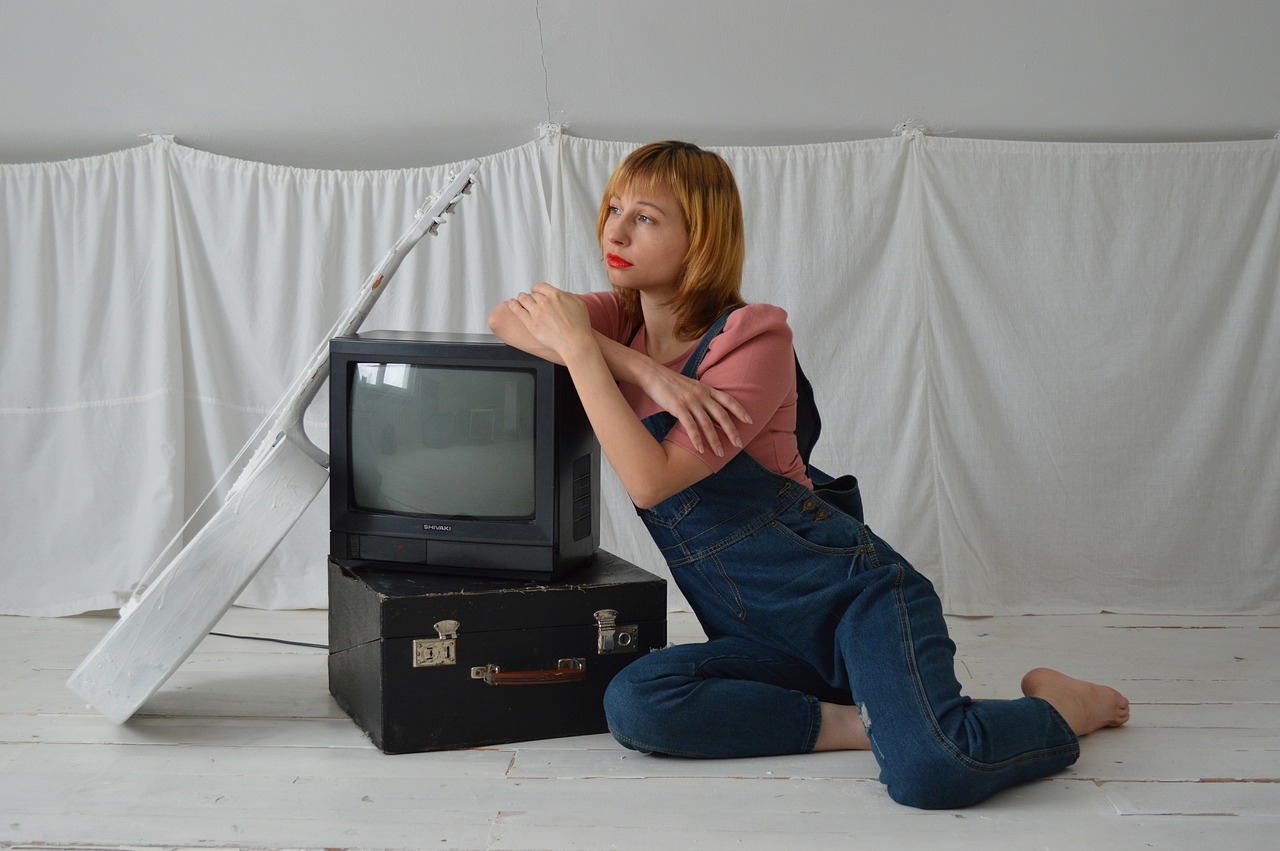
Cleaning and Safety Precautions
Before diving into the exciting world of transforming your old television into a stunning plant stand, it's crucial to prioritize cleaning and safety precautions. This step not only protects your health but also ensures that your new plant stand is a safe and inviting addition to your home. Start by unplugging the television and moving it to a well-ventilated area. You don’t want to be inhaling any dust or debris that may have accumulated over the years!
Next, grab a soft cloth and some gentle cleaning solution to wipe down the exterior of the television. Pay special attention to the corners and crevices where dirt tends to hide. If your television has been sitting in storage for a while, it might be wise to wear gloves and a mask to avoid any allergic reactions to dust or mold. Remember, safety first!
Once the exterior is sparkling clean, it’s time to tackle the internal components. This is where safety precautions become even more critical. Old televisions can contain hazardous materials, such as lead, and the capacitors can hold a charge even when unplugged. It’s advisable to consult a professional if you’re unsure about disassembling the television yourself. If you decide to proceed, ensure you have the right tools and protective gear, such as safety goggles and gloves, to protect yourself from potential injuries.
In addition to cleaning and disassembling, consider the layout of your plants. You want to ensure that your repurposed television stand is not only safe but also functional for your greenery. Think about how much light your plants will need and how you can arrange them to get the best exposure. A well-thought-out design will not only enhance the aesthetic appeal but also support the health of your plants.
Lastly, it’s a good idea to keep a first aid kit nearby while you work. Accidents happen, and being prepared can make the difference between a minor scrape and a more serious injury. With these cleaning and safety precautions in mind, you’re well on your way to creating a beautiful and safe plant stand from your old television!
- What safety gear should I wear while cleaning and disassembling the television? It's best to wear gloves, safety goggles, and a mask to protect yourself from dust and hazardous materials.
- Can I use any cleaning solution on my television? No, stick to gentle cleaners that won't damage the surface or leave harmful residues.
- What should I do with the internal components after removing them? Dispose of them responsibly, as they may contain hazardous materials.
- How can I ensure my plants get enough light in the new setup? Arrange your plants based on their light requirements and consider using grow lights if necessary.
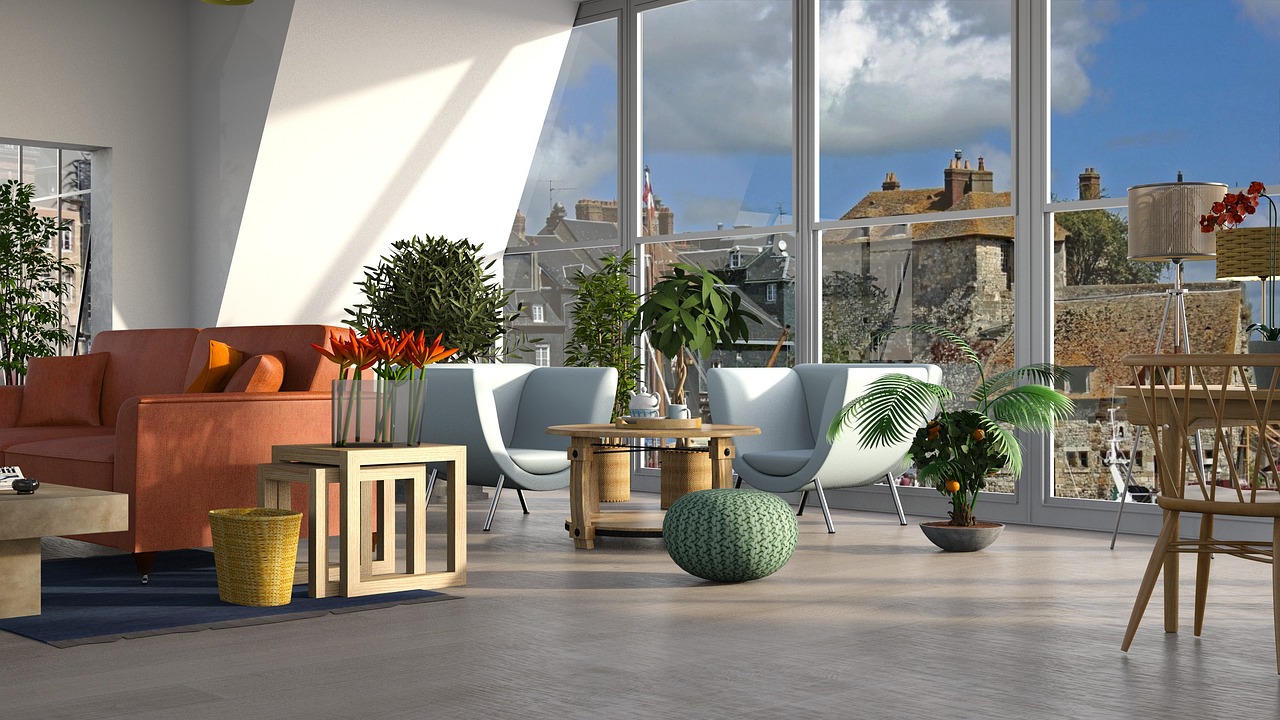
Removing Internal Components
When it comes to transforming your old television into a stunning plant stand, removing the internal components is a crucial step that cannot be overlooked. Not only does this ensure safety by eliminating any potential hazards, but it also creates a more spacious environment for your plants to thrive. Imagine trying to fit a beautiful fern in a cramped space filled with outdated electronics—it's simply not going to work!
Before diving into the disassembly process, make sure to gather the necessary tools. You’ll typically need a screwdriver, pliers, and possibly a utility knife. Always remember to wear gloves and eye protection, as old televisions can harbor sharp edges and glass fragments. Once you’re geared up, follow these steps to safely remove the internal components:
- Unplug the Television: First and foremost, ensure the television is unplugged from any power source. This is vital for your safety.
- Open the Back Panel: Use your screwdriver to remove the screws holding the back panel in place. Set the screws aside in a safe location.
- Carefully Remove Internal Parts: Inside, you’ll find various components such as circuit boards, tubes, and wiring. Remove these carefully, starting with the larger pieces. Be cautious of the cathode ray tube (CRT) if your television is an older model, as it can be particularly hazardous.
- Dispose Responsibly: Once removed, make sure to dispose of the electronic waste properly. Many communities offer recycling programs specifically for electronics.
After all internal components are removed, you’ll notice a significant transformation in the television’s interior space. This newfound emptiness not only allows for better airflow around your plants but also enhances the overall aesthetic of your plant stand. You can even consider adding decorative elements like fairy lights or a layer of decorative stones at the bottom for added flair.
By taking the time to carefully remove these components, you’re setting the stage for a beautiful and functional plant display. Just think of it as giving your old television a second chance at life, turning it from a relic of the past into a vibrant centerpiece that breathes life into your home.
Q1: Is it safe to remove the internal components of an old television?
A1: Yes, but it’s crucial to take safety precautions. Always unplug the television and wear protective gear while disassembling.
Q2: What should I do with the internal components after removal?
A2: Dispose of them responsibly. Many areas have recycling programs for electronic waste.
Q3: Can I use any type of old television for this project?
A3: Ideally, choose a model that is sturdy and has enough space to accommodate your plants. CRT televisions can be heavier, so ensure they are stable.
Q4: How do I ensure my plants receive adequate light in the television stand?
A4: Position the stand near a window or use grow lights to provide the necessary light for your plants.

Sealing and Painting
Once you've successfully disassembled your old television and removed its internal components, it's time to focus on the exterior. This step is not just about aesthetics; it's also crucial for protecting your newly transformed plant stand from moisture and wear. Think of sealing as giving your television a protective armor, making sure it can withstand the elements, especially if you plan to keep it in a humid environment.
First, you’ll want to choose a high-quality sealant that is suitable for the materials of your television. Most old televisions are made of plastic or wood, so look for a sealant that adheres well to these surfaces. Apply the sealant evenly, following the manufacturer's instructions. This will create a barrier against moisture, which is essential for keeping your plants healthy and your stand looking fresh. Let it dry completely before moving on to the painting stage.
Now comes the fun part: painting! This is your chance to get creative and personalize your plant stand. You can choose a color that complements your home decor or even go for a bold statement hue. If you're feeling adventurous, consider using a spray paint for a smooth finish or a brush for a more textured look. Remember to apply multiple thin coats rather than one thick coat, as this will help prevent drips and uneven surfaces. Allow each coat to dry thoroughly before applying the next.
For a truly unique touch, you might want to explore different painting techniques. For example, a distressed finish can give your plant stand a rustic charm, while a glossy finish can add a modern flair. If you're unsure where to start, here are a few options:
- Matte Finish: Gives a soft, understated look.
- Glossy Finish: Provides a shiny, modern appearance.
- Metallic Paint: Adds a touch of elegance and sophistication.
- Chalk Paint: Perfect for a vintage, shabby-chic vibe.
After painting, allow your stand to dry completely in a well-ventilated area. Once dry, you can add a layer of clear coat for additional protection, especially if your stand will be exposed to sunlight or humidity. This will not only enhance the durability of your paint job but also give it a beautiful sheen.
In conclusion, sealing and painting your old television is an essential step in transforming it into a stylish plant stand. It's about more than just looks; it's about ensuring your creation is durable and ready to support your lovely plants. So, roll up your sleeves, grab those brushes, and let your creativity shine!
Q1: Can I use any type of paint on my old television?
A1: It's best to use paint designed for the material of your television. Spray paint or acrylic paint works well for most surfaces, but always check the label for compatibility.
Q2: How long should I wait before placing plants on the stand after painting?
A2: Allow the paint to dry completely, which can take anywhere from a few hours to a day, depending on the type of paint used. Always refer to the manufacturer's drying time recommendations.
Q3: Do I need to seal the paint after I finish?
A3: While it's not mandatory, applying a clear coat can enhance durability and protect your paint job from scratches and moisture.
Q4: What if my television has a lot of scratches or dents?
A4: You can fill in scratches or dents with wood filler or a similar product before sealing and painting to ensure a smooth finish.
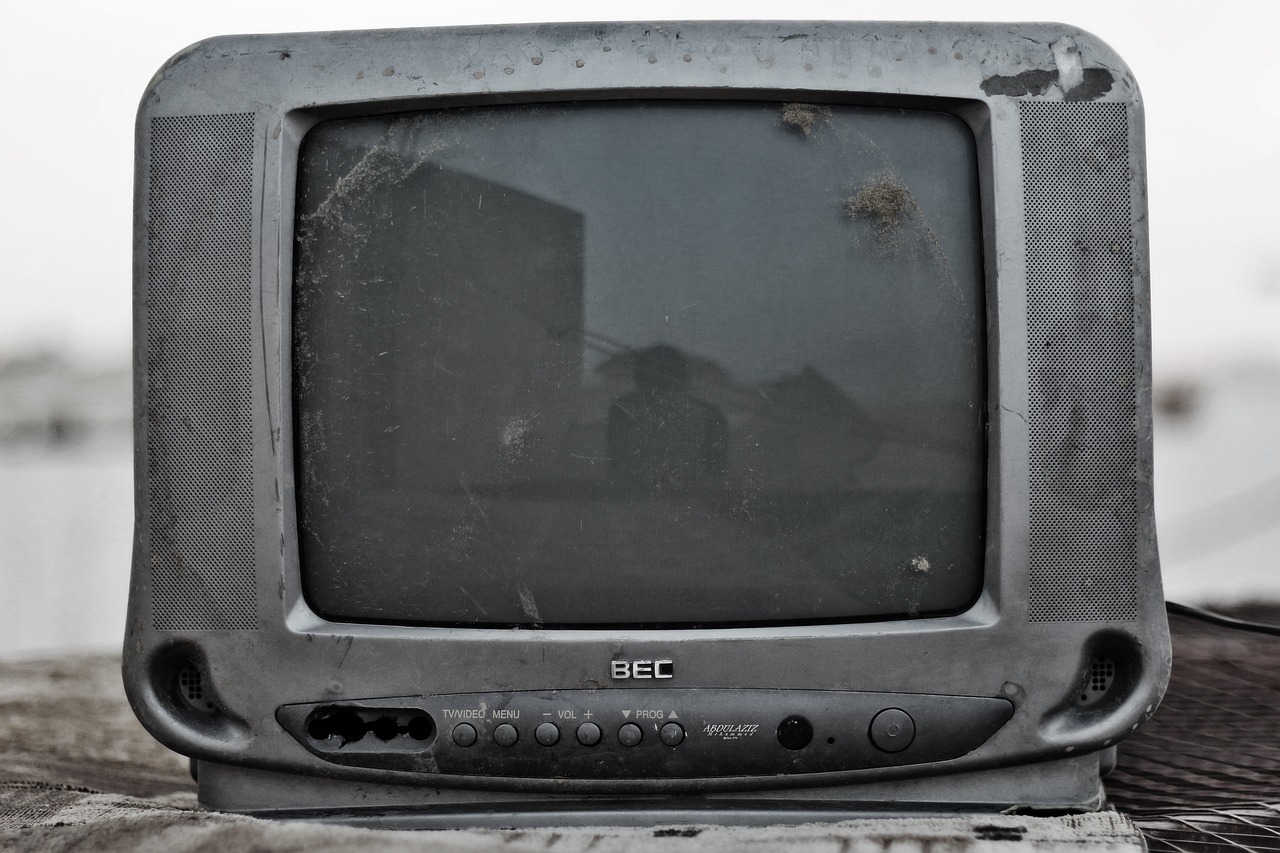
Designing the Plant Stand
When it comes to designing your plant stand from an old television, the possibilities are as vast as your imagination! First, you’ll want to consider the overall layout and arrangement of your plants. Think of your television as a canvas, and your plants as the vibrant colors that will bring it to life. Start by visualizing how you want your stand to look. Do you envision a lush jungle vibe, or perhaps a minimalist aesthetic? The choice is yours!
One effective method to achieve a stunning display is to use varying heights and sizes of plants. This creates depth and interest, much like a well-composed photograph. For example, you might place taller plants, such as snake plants or pothos, at the back or top of the stand, while smaller plants like succulents or air plants can occupy the front. This arrangement not only enhances visibility but also ensures that each plant gets the light it needs to thrive.
Additionally, consider using decorative pots or containers that complement the style of your television stand. A vintage TV might look stunning with rustic terracotta pots, while a sleek, modern television could pair beautifully with glossy ceramic or metallic planters. The right pots can serve as an extension of your design, tying everything together in a cohesive look.
Another aspect to think about is plant health. Ensure that your arrangement allows for adequate airflow and light exposure. If your television stand has shelves, positioning plants with similar light requirements together will help them flourish. For instance, grouping low-light plants like ZZ plants and peace lilies on one shelf will keep them happy and healthy.
Remember, you can also incorporate decorative elements to further enhance your plant stand. Think about adding fairy lights for a whimsical touch or using small figurines and stones to create a mini landscape. These little details can transform your plant stand from a simple piece of furniture into a captivating focal point in your home.
In summary, designing your plant stand is all about creativity and personal expression. By considering plant height, pot style, and overall arrangement, you can create a visually appealing display that not only showcases your plants but also reflects your unique style. So, roll up your sleeves and let your creativity bloom!
- What type of plants are best for a repurposed television stand? Low-light plants like snake plants, pothos, and ZZ plants are great choices, while succulents thrive in brighter conditions.
- How do I ensure my plants get enough light? Place your stand near a window or use grow lights if natural light is limited.
- Can I use the television's interior for storage? Yes! After removing internal components, you can use the space for storing gardening supplies or decorative items.

Choosing the Right Plants
When it comes to repurposing an old television into a stunning plant stand, one of the most exciting yet crucial steps is . You want to ensure that your green friends not only thrive in their new home but also complement the aesthetic of your space. Think of it like dressing up for a party; you want to look good, feel comfortable, and make a lasting impression! So, how do you pick the perfect plants?
First off, consider the light requirements of your plants. Different plants have different needs when it comes to sunlight. Some prefer basking in bright, direct light, while others are more than happy to thrive in low-light conditions. For your repurposed television stand, you might want to choose a mix of both types, especially if your TV stand will be placed in a spot that doesn’t get a lot of natural light. Here’s a quick breakdown:
| Plant Type | Light Requirement | Examples |
|---|---|---|
| Low-Light Plants | Indirect light or shade | Snake Plant, Pothos, ZZ Plant |
| Bright-Light Plants | Direct sunlight | Succulents, Cacti, Geraniums |
Next, think about the growth patterns of the plants you’re considering. You wouldn’t want a plant that outgrows its space in a matter of weeks, right? Look for plants that have a manageable growth rate and size. Some plants, like the Pothos, can trail beautifully down the sides of your television stand, while others, such as Ferns, can create a lush, bushy look on top. It’s all about balance and making sure each plant has enough room to grow without overshadowing its neighbors.
Lastly, don’t forget about the overall aesthetics of your plant selection. Think of your plant stand as a living art piece! You want to choose plants with varying colors, textures, and shapes to create a visually appealing arrangement. For instance, pairing the deep green leaves of a Snake Plant with the vibrant hues of a Calathea can create a stunning contrast that draws the eye. Remember, the goal is to create a harmonious display that not only looks beautiful but also feels cohesive with your home decor.
In summary, when choosing the right plants for your repurposed television stand, consider their light requirements, growth patterns, and how they visually complement each other. With the right selection, your plant stand will not only breathe new life into your old television but also become a cherished centerpiece in your home!
Q: Can I use any type of plant in my repurposed television stand?
A: While you can technically use any type of plant, it's best to choose those that fit the light conditions of your space and have manageable growth patterns to ensure they thrive.
Q: How do I know if my plants are getting enough light?
A: If your plants are stretching towards the light or their colors are fading, they may not be getting enough sunlight. Conversely, if they’re wilting or turning brown, they might be getting too much direct light.
Q: What if I want to change the plants later on?
A: Absolutely! You can rotate plants based on the seasons or your personal preferences. Just be mindful of each plant's specific care needs as you make changes.
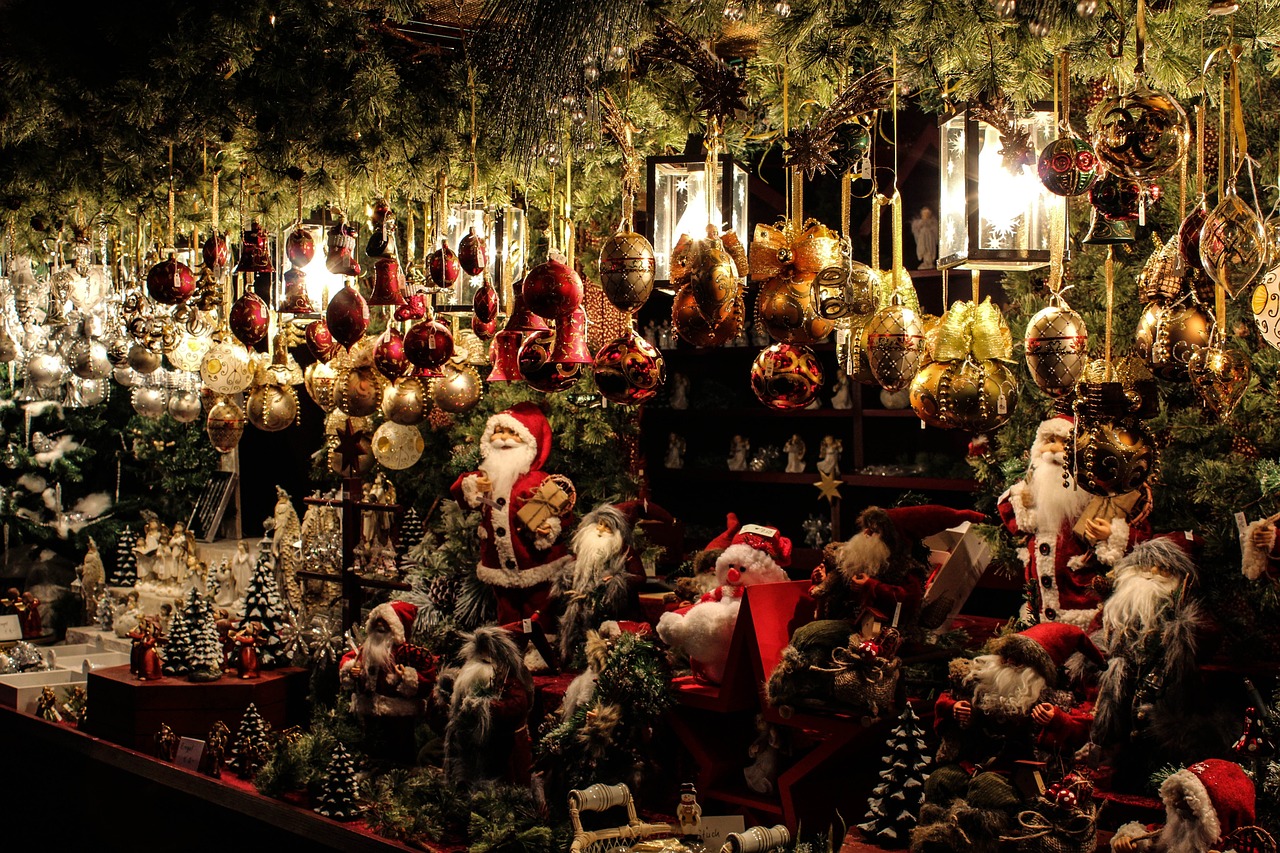
Low-Light vs. Bright-Light Plants
When it comes to choosing the right plants for your repurposed television stand, understanding the difference between low-light and bright-light plants is crucial. Not all plants thrive under the same conditions, and matching the right plant to the right environment can make all the difference in their growth and health. Low-light plants, as the name suggests, are perfect for areas that don’t receive much natural sunlight. They are resilient and can adapt to less-than-ideal lighting conditions. Examples include snake plants, pothos, and ZZ plants. These plants not only add a touch of greenery to your home but also require minimal care, making them ideal for busy lifestyles.
On the flip side, bright-light plants need ample sunlight to flourish. They thrive in sunny spots and can often be found basking in windowsills or bright rooms. Popular choices in this category are succulents, cacti, and fiddle leaf figs. These plants can be a bit more demanding, requiring regular watering and attention to their sun exposure. If you're considering bright-light plants for your television stand, ensure that the location receives enough light throughout the day to keep these beauties healthy and vibrant.
To help you decide, here’s a quick comparison:
| Plant Type | Light Requirements | Examples |
|---|---|---|
| Low-Light Plants | Indirect sunlight, tolerates shade | Snake Plant, Pothos, ZZ Plant |
| Bright-Light Plants | Direct sunlight, needs bright areas | Succulents, Cacti, Fiddle Leaf Fig |
When selecting plants for your television stand, consider the amount of natural light available in your space. Are you placing it near a window, or is it tucked away in a corner? This will ultimately guide your choices. Remember, the right plant can not only beautify your home but also create a lively atmosphere that enhances your living space.
- Can I mix low-light and bright-light plants on the same stand? Yes, but make sure to position them according to their light needs. Place bright-light plants where they can receive adequate sunlight and low-light plants in shadier spots.
- How do I know if my plant is getting enough light? If your plant is stretching towards the light or has leggy growth, it might need more sunlight. Conversely, if leaves are dropping or turning yellow, it could be getting too much light.
- What are some tips for maintaining low-light plants? Low-light plants typically require less frequent watering. Always check the soil moisture before watering and avoid over-watering, which can lead to root rot.
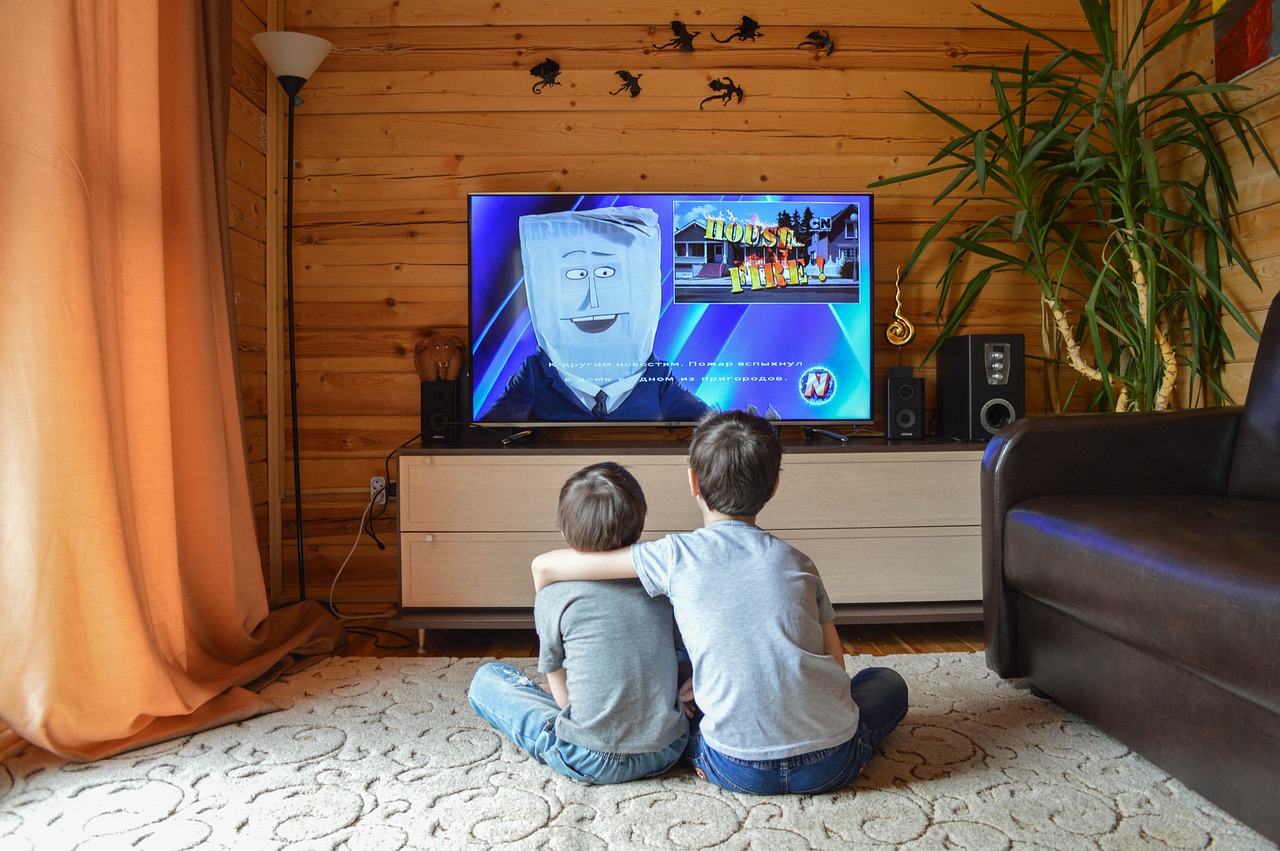
Arranging Plants for Visual Appeal
Arranging plants on your repurposed television stand is not just about placing them haphazardly; it’s an art form that can transform your space into a vibrant oasis. Imagine your old TV becoming a lush green display, where each plant complements the others, creating a stunning focal point in your home. First off, consider the height of your plants. Taller plants, such as snake plants or fiddle leaf figs, can be placed at the back or on higher shelves, while shorter varieties, like succulents or ferns, should occupy the front. This layering effect not only maximizes visibility but also allows each plant to shine without overshadowing its neighbors.
Next, think about the colors and textures of your plants. Mixing different shades of green can create depth, while introducing plants with variegated leaves or colorful flowers adds a pop of vibrancy. For instance, pairing a deep green ZZ plant with a bright, flowering African violet can create a delightful contrast that catches the eye. You might also want to incorporate some trailing plants, like pothos or string of hearts, which can elegantly drape over the edges, adding a cascading effect that softens the overall look.
Don’t forget about the pots! Using mismatched pots can add a whimsical touch, but ensure they still harmonize with your overall decor. For a cohesive look, consider painting your pots in complementary colors or using natural materials like terracotta or ceramic that resonate with the vintage vibe of the old television. You can also use decorative trays or stands to group smaller plants together, creating clusters that draw the eye and encourage exploration.
Lastly, be mindful of the light requirements of each plant. Positioning them according to their needs will not only enhance their growth but also ensure that your arrangement looks its best. For example, placing light-loving plants near the top of the television stand where they can bask in sunlight, while shadier plants can thrive in lower light areas, will create a balanced and healthy display.
In conclusion, arranging your plants for visual appeal is all about balance, contrast, and thoughtful placement. By considering height, color, pot style, and light requirements, you can create a stunning showcase that breathes new life into your old television and enhances your home decor.
- What types of plants are best for a television stand?
Low-light plants like snake plants and pothos are ideal, but if your stand gets plenty of light, consider succulents or herbs.
- How do I ensure my plants get enough light?
Position light-loving plants higher up on the stand and rotate them regularly to ensure even exposure.
- Can I use any type of pot for my plants?
Yes, but ensure they have proper drainage. Terracotta and ceramic pots are great choices for aesthetics and plant health.
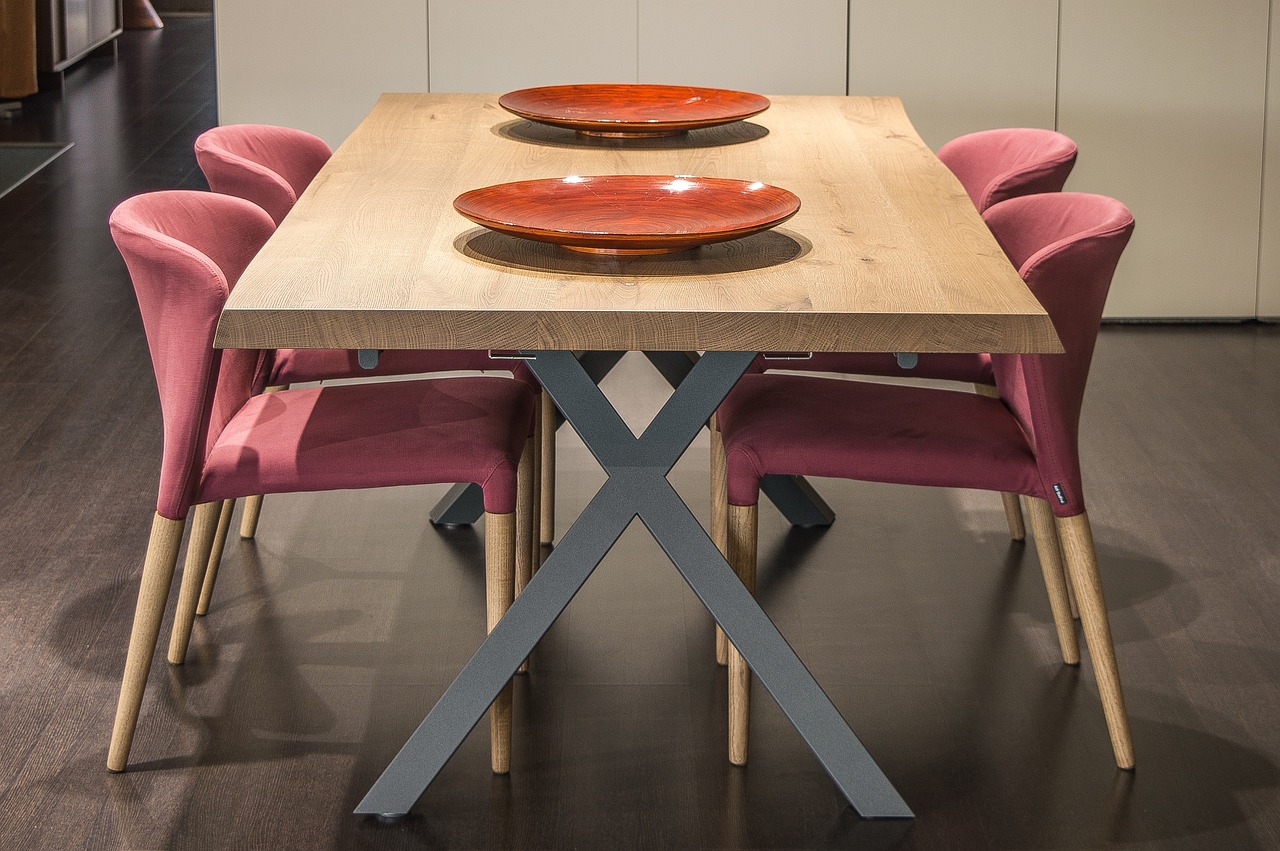
Maintenance Tips
Regular maintenance is the secret ingredient to keeping your repurposed television plant stand looking fabulous and your plants thriving. Just like a car needs oil changes and a house needs cleaning, your plant stand requires a bit of love and attention to flourish. Think of it as nurturing a friendship; the more effort you put in, the better the relationship grows. So, what are the essential maintenance tasks you need to prioritize?
First and foremost, let’s talk about watering. It’s crucial to establish a proper watering schedule tailored to the needs of your plants. Overwatering can be just as harmful as underwatering, leading to root rot or dehydration. As a general rule of thumb, stick your finger about an inch into the soil. If it feels dry, it’s time for a drink! Additionally, consider using a moisture meter for more precision. This handy tool can take the guesswork out of watering, ensuring your plants get just the right amount.
Next up is fertilizing. Plants in a repurposed television stand may need a little extra boost since they are in a confined space. Use a balanced, water-soluble fertilizer every month during the growing season (spring and summer). This will provide your plants with the essential nutrients they crave. Just remember, moderation is key! Too much fertilizer can lead to nutrient burn, which is not a fun experience for your green friends.
Another important aspect of maintenance is pruning. Regularly trimming your plants not only keeps them looking neat but also encourages healthy growth. Think of pruning as giving your plants a haircut; it helps them stay in shape! Remove any dead or yellowing leaves, and trim back overgrown stems to promote fuller growth. This process can also improve air circulation, reducing the risk of pests and diseases.
Speaking of pests, keeping an eye out for any unwanted visitors is vital. Regularly inspect your plants for signs of pests such as aphids, spider mites, or mealybugs. If you spot any, don’t panic! A simple solution is to wipe the leaves with a damp cloth or spray them with a mixture of water and mild soap. It’s a natural way to keep your plants safe without resorting to harsh chemicals.
Lastly, consider the overall aesthetics of your plant stand. Dust can accumulate on the television, blocking light and making it look shabby. A quick wipe-down with a damp cloth will keep it looking fresh and clean. Plus, it allows more light to reach your plants, promoting healthy growth.
In summary, maintaining your repurposed television plant stand involves a few key tasks: watering, fertilizing, pruning, pest control, and regular cleaning. By dedicating a bit of time each week to these activities, you’ll create a thriving environment for your plants and a stunning focal point in your home. Remember, a little love goes a long way in the world of plant care!
- How often should I water my plants? It depends on the type of plant, but checking the soil moisture is a good practice. Generally, water when the top inch of soil feels dry.
- Can I use regular potting soil in my television stand? Yes, regular potting soil works well, but consider the drainage needs of your plants. You might want to add perlite or sand for better drainage.
- Is it safe to use an old television for this project? Yes, as long as you remove all internal components and ensure the television is clean and safe, it can make a fantastic plant stand!
- What types of plants are best for low light conditions? Some great options include pothos, snake plants, and ZZ plants, which thrive in lower light settings.

Watering and Fertilizing
This article explores creative ways to transform an old television into a stylish and functional plant stand, enhancing your home decor while giving new life to discarded items.
Selecting the appropriate old television model is crucial for a successful repurposing project, ensuring it has the right size, style, and structural integrity to support your plants effectively.
Before transforming your old television, it’s essential to prepare it properly by cleaning, removing internal components, and ensuring safety for both you and your plants.
Thoroughly cleaning the television and taking necessary safety precautions will prevent any accidents or hazards during the repurposing process, making it a safe project for your home.
Disassembling the television to remove internal components not only ensures safety but also creates more space for your plants and enhances the overall aesthetic of the stand.
Sealing and painting the exterior of the television can enhance its appearance, allowing you to customize the color and finish to match your home décor.
Designing the layout and arrangement of plants on your new stand is vital for both aesthetics and plant health, ensuring they receive adequate light and space to thrive.
Selecting the right plants for your repurposed television stand is essential, considering factors such as light requirements, growth patterns, and overall aesthetics to create a harmonious display.
Understanding the difference between low-light and bright-light plants will help you choose the best options for your television stand, ensuring they thrive in their new environment.
Strategically arranging your plants can enhance visual appeal, creating a beautiful focal point in your space while also considering their growth habits and care needs.
Regular maintenance is key to keeping your plants healthy and your repurposed television stand looking great, including watering, pruning, and checking for pests or diseases.
Establishing a proper watering and fertilizing schedule is essential for ensuring your plants receive the nutrients they need to flourish in their unique new home. Just like humans, plants have specific hydration needs that vary based on their type, size, and even the season. For instance, some plants thrive on a moist environment, while others prefer to dry out between waterings. Here’s a quick guide to help you determine the right approach:
| Plant Type | Watering Frequency | Fertilizing Schedule |
|---|---|---|
| Succulents | Every 2-3 weeks | Once every 2 months |
| Ferns | Weekly | Once a month |
| Flowering Plants | Every 5-7 days | Every 2 weeks during blooming |
When watering, it’s best to do so in the morning, allowing the plants to absorb moisture before the heat of the day sets in. Overwatering is a common mistake, so always check the soil moisture before adding more water. Stick your finger about an inch into the soil; if it feels dry, it’s time to water. As for fertilizing, opt for a balanced, water-soluble fertilizer that can easily be mixed with water. This will ensure that your plants receive a consistent supply of nutrients without overwhelming them.
Remember, the key is to observe and adjust based on how your plants respond. If they appear droopy or yellowing, it might be a sign of overwatering, while browning edges could indicate a need for more moisture. With a little attention and care, your repurposed television plant stand will be a thriving green oasis!
- Can any old television be used for this project? Yes, but ensure it has a sturdy structure and enough space for your plants.
- What types of plants are best for a television stand? Consider low-light plants if your stand is in a dim area, or choose bright-light plants for sunnier spots.
- How do I maintain the television plant stand? Regular watering, pruning, and checking for pests will keep it looking great and your plants healthy.
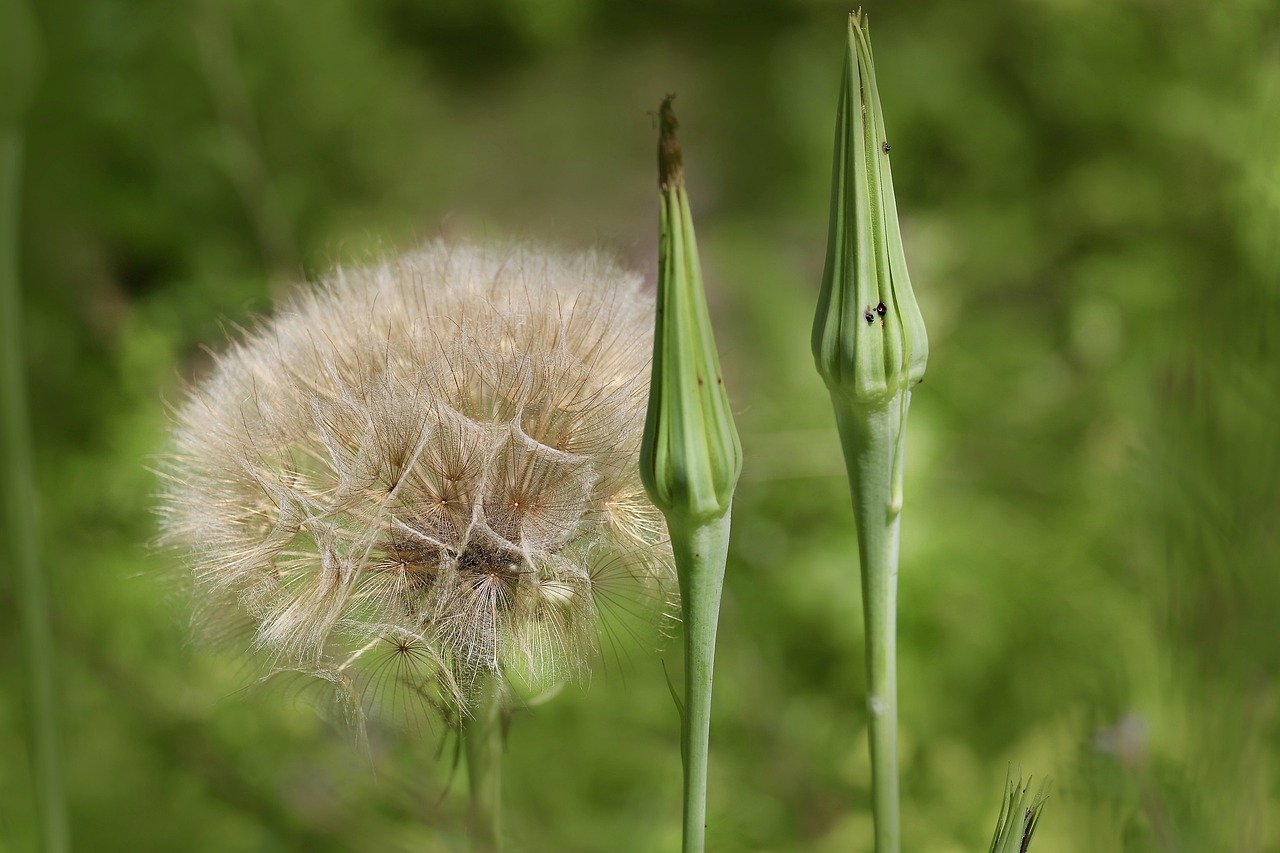
Pruning and Care Techniques
When it comes to keeping your repurposed television plant stand flourishing, pruning and care techniques play a crucial role. Think of your plants as little green companions that need your attention to thrive. Regular pruning not only helps maintain a neat appearance but also promotes healthier growth. So, how do you go about it? Well, it's simpler than you might think!
First off, familiarize yourself with the specific needs of your plants. Each type has its own growth habits and pruning requirements. For instance, some plants, like pothos, can handle a good trim every few months, while others, like snake plants, need minimal interference. A good rule of thumb is to prune any dead or yellowing leaves as soon as you spot them. This encourages new growth and keeps your plant looking fresh.
Another important aspect of plant care is ensuring that your plants aren’t overcrowded. You want to give each plant enough space to breathe and grow. If you notice some plants are starting to crowd each other, it might be time to prune back a few stems or even consider relocating some to another spot in your home. Remember, just like in life, space can be a game changer for growth!
Additionally, you should consider the season when planning your pruning. Most plants thrive with a good trim during their active growing season, typically in spring and early summer. This is when they can recover quickly and bounce back with vibrant growth. However, some plants might go dormant in winter, and pruning during this time could stress them out. So, always check the specific needs of your plants!
Lastly, let’s not forget about the tools you use. Having the right equipment is essential for effective pruning. A sharp pair of pruning shears is your best friend here. Dull tools can damage the plant, leading to potential disease. Clean your tools before and after use to prevent any contamination between plants. A simple wipe with rubbing alcohol can do wonders!
To summarize, here are some key points to remember when pruning and caring for your plants:
- Identify the specific needs of each plant.
- Regularly remove dead or yellowing leaves.
- Avoid overcrowding by spacing plants appropriately.
- Prune during the active growing season for best results.
- Use sharp, clean tools to minimize damage.
By following these simple yet effective pruning and care techniques, you'll ensure that your repurposed television plant stand not only looks stunning but also supports the healthy growth of your leafy friends. Remember, a little love and attention go a long way in the world of plant care!
Q: How often should I prune my plants?
A: It depends on the type of plant. Generally, you can prune every few months, but always check the specific needs of your plant species.
Q: What tools do I need for pruning?
A: A sharp pair of pruning shears is essential. Make sure to keep them clean to avoid transferring diseases between plants.
Q: Can I prune during winter?
A: It's best to avoid pruning during winter for most plants, as they may be dormant and not recover well from trimming.
Q: How do I know if my plant needs more space?
A: If you notice plants leaning towards the light or if leaves are overlapping significantly, it’s a sign they need more space.
Q: What should I do with the cuttings?
A: Depending on the plant, you can propagate some cuttings in water or soil to grow new plants!
Frequently Asked Questions
- Can any old television be used as a plant stand?
Not all televisions are created equal! It's best to choose a model that has a sturdy structure and enough space for your plants. Vintage CRT models work well, but make sure they’re in good condition and can support the weight of your plants and pots.
- What safety precautions should I take when preparing the television?
Safety first! Always unplug the television before you start working on it. Wear gloves and goggles to protect yourself from any sharp edges or internal components. It’s also a good idea to work in a well-ventilated area to avoid inhaling any dust or debris.
- How do I remove the internal components of the television?
Disassembling a television can seem daunting, but it’s fairly straightforward. Start by removing the back panel with a screwdriver, then carefully take out the internal parts. Be cautious of capacitors, as they can hold a charge even when unplugged. If you're unsure, look up a tutorial specific to your TV model!
- What types of plants are best for a repurposed television stand?
Choosing the right plants is crucial for a thriving display! Consider low-light plants like pothos or snake plants if your stand will be in a dim area, or go for bright-light lovers like succulents or cacti if it’s near a window. Always think about the growth habits of the plants to avoid overcrowding.
- How should I arrange the plants on the stand?
Arranging your plants can be like creating a masterpiece! Start with taller plants in the back and shorter ones in the front for a tiered effect. Mix different types of plants and textures to create visual interest. Don’t forget to consider their light needs when placing them!
- What maintenance do I need to perform on my plant stand?
Regular maintenance is key to keeping your plants happy! Make sure to water them according to their needs, usually when the top inch of soil feels dry. Prune dead leaves and check for pests regularly to keep your stand looking fresh and vibrant.
- Can I paint the television stand, and how do I do it?
Absolutely! Painting your television stand is a great way to customize it. Start by cleaning the surface, then apply a primer before painting with a color of your choice. Use non-toxic paint if you're concerned about plant safety. Let it dry thoroughly before placing your plants!



















